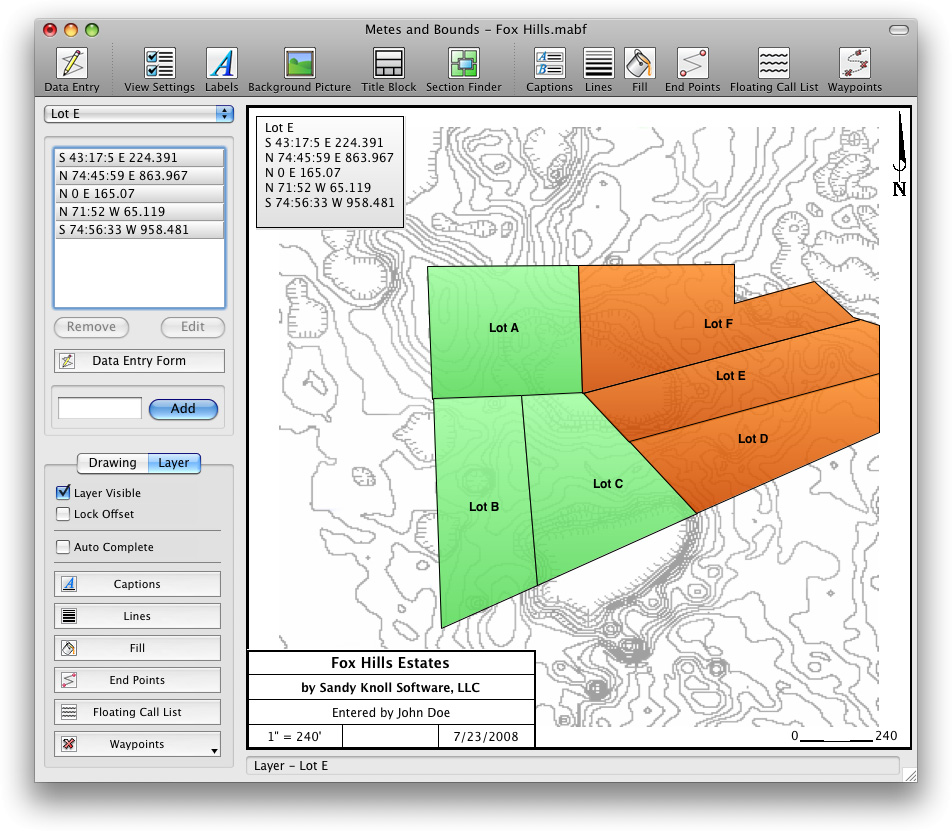Metes and bounds, limits or boundaries of a tract of land as identified by natural landmarks, such as rivers, or by man-made structures, such as roads, or by stakes or other markers. Survey (Metes and Bounds) A metes and bounds description describes the property by locating it within the public surveying system. The boundaries of the property are described by working around a parcel of real estate in sequence, starting with a point of beginning. The point of beginning could be a landmark or a point described based in the. Prior to the Revolutionary War, when land was surveyed, the “metes and bounds” system was used to define boundaries. The system is still in existence today for land which was acquired before the present system of surveying land was adopted.[1] States which used this form of surveying were the thirteen original colonies (Connecticut, Delaware, Georgia, Maryland, Massachusetts, New. Metes and bounds are the limits or boundaries of a piece of property as identified by its natural landmarks. Examples of metes and bounds landmarks include rivers, roads, stakes, or other such natural or manmade markers. Metes and bounds is a system or method of describing land, real property (in contrast to personal property) or real estate. The term 'metes' refers to a boundary defined by the measurement of each straight run, specified by a distance between the terminal points, and an orientation or direction.
A legal description is a formal description of real property that identifies the boundaries of an entire parcel. The basic test as to whether a legal description is good is whether a surveyor can properly locate and identify the parcel based upon its description. A legal description can take different forms including reference to a government survey, metes and bounds, or a lot and block of a subdivision. In order to be valid, a legal description must close (e.g. the lines describing the start and end of the legal description must meet) and it cannot be confused with another legal description (e.g. there are not two parcels described as Lot 1, Block 1, Minneapolis Addition).
United States Government Survey System
The government or rectangular survey system was adopted by the United States in 1785. This system of land surveying is based on the north-south lines of longitude, which are called meridians, and the east-west lines of latitude, which are called parallels. Each part of the United States was assigned a specific meridian and parallel as a reference point. Based upon these reference points, the land is further divided into townships of 36 square miles. Townships are then divided into 36 sections of one square mile each. Sections are further divided into quarters and so on.
Example: The Northeast Quarter of Section 2, Township 23, Range 16, Hennepin County, Minnesota.
:max_bytes(150000):strip_icc()/getty-compass-58b9cb235f9b58af5ca6ea70.jpg)

Metes and Bounds
Metes And Bounds
A metes and bounds legal description is usually one that was created by a surveyor that finds a starting point and proceeds with directions, angles and distances. A metes and bounds description is commonly used in relation to the U.S. Government Survey System.
Example: Beginning at the Northeast corner of the Southeast Quarter of the Southwest Quarter of Section 34, Township 23, Range 16, Hennepin County, Minnesota; thence East along the North line of said Southwest Quarter a distance of 125.5 feet.
Lot and Block
A lot and block legal description is created by filing a subdivision survey in the land records. This survey is called a plat and creates the subdivision name (e.g. Minneapolis Addition). The plat most often uses metes and bounds descriptions to identify the perimeter of the platted land. Smaller parcels within the platted subdivision are mapped out with courses and distances. However, once the plat is recorded, the smaller parcels are identified by letters or numerals instead of using the metes and bounds descriptions. Most often a subdivision is divided into one or more “blocks.” The blocks are then further divided into one or more “lots.” The legal description from an unrecorded plat cannot be used until that plat is recorded. In Minnesota, if the platted description is used prior to the recording of the plat, documents containing the platted descriptions would be invalid.
Example: Lot 1, Block 1, Minneapolis Addition, Hennepin County, Minnesota.

Metes and bounds are the boundaries of a parcel of real estate that identified by its natural landmarks. Java jdk for mac. Metes and Bounds landmarks are often used in a “legal description” of a land. Legal description is the geographical description of a land that identifies its precise location, and is kept with the deed of the land. In legal descriptions, metes and bounds are considered as the most accurate description of a piece of land in some jurisdictions.
A metes and bounds legal description starts from a point of beginning, then traces the outline of the property’s boundary lines until there is closure in the legal description. Vga adapter for apple mac. Natural monuments and artificial monuments can both be used as metes and bounds. For example, rivers, roads, trees, etc.
Metes And Bounds Realty
[Last updated in August of 2020 by the Wex Definitions Team]
Metes And Bounds Definition
- wex
